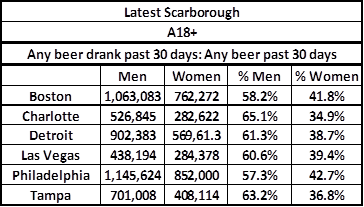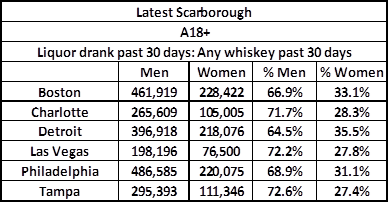
(By Bob McCurdy) Over the past few months, several major national advertisers have jettisoned stereotypical marketing assumptions and have begun to take a more inclusive advertising approach. Today’s consumer is too complex and nuanced to be effectively pigeonholed by narrowly defined, longstanding but often unsubstantiated thinking.
Byron Sharp of the Ehrenberg-Bass Institute has contributed to this movement providing empirical data that suggests that every consumer, regardless of gender or demographic, who has the wherewithal to purchase a product or service, is of value to an advertiser due to what he calls the “Law of Moderation.” This law states that, over time, the heavy buyer becomes the light buyer, the light buyer becomes the heavy buyer, and the non-buyer becomes a buyer. Sharp also highlighted that most growth comes not from the heavy buyers of a product or service, but from new and light buyers, referring to it as the “Heavy Buyer Fallacy” — another reason to reach all with the wherewithal to purchase.
When it comes to who actually buys and utilizes a product, all is often not what it seems, and as a result marketing can easily miss its mark.
Alphabet, Inc. (Google) Chairman Eric Schmidt once asked why one would ever pay to show an advertisement for diapers to households who don’t have a baby. If one followed Mr. Schmidt’s advice and only advertised to women with toddlers, one would miss a large portion of the diaper market according, ironically, to a 2015 Google/Ipsos study which concluded that 40% of baby product purchases come from homes with no children.
While Scarborough doesn’t break down diaper purchases it does breakdown a close proxy: children’s clothing purchases.
The following illustrates why it would make sense for all with the wherewithal to purchase be familiar with an offering, product, or service. Life is fluid, consumer circumstances and purchasing habits change. Moms with no kids, have one, single women get married and have children, and Boomers with no grandchildren get grandchildren. It’s too late if your marketing reaches these individuals for the first time when they are in immediate need of your product or service.
The following chronicles the dangers of “assuming” when it comes to marketing. Almost 30% of all children’s clothing in these six markets come from households with no children. Sorry Eric.
The ensuing headlines clipped over the past few months confirm that marketers are beginning to embrace the validity of the “Heavy Buyer Fallacy” and market more inclusively:
AB InBev Raises Its Focus On Female Consumers
Molly Hayes, Anheuser-Busch InBev’s Global Director/Innovation Insights, discussed a year-long research effort to understand how the female audience views and acts. “This is about looking at a category and fundamentally saying, ‘We need to change the way we think, to create an inclusive category.’”
Scarborough confirms the importance of women to the beer manufacturer:
Close to four out of 10 adults who drank beer in the past month in these six markets were women.
How Women Are Pushing Guitar Giant Fender’s Marketing Into The 21st Century
Evan Jones, CMO of Fender, was quoted as saying, “Early on we commissioned some of the first consumer segmentation work the company had ever done to understand the consumer a bit better.” What they discovered was that 50 percent of all new guitars in the last five years had been purchased by women, which, he says, “was a complete shocker to a lot of people in the building,” but spoke to the increasing diversity of their audience and the opportunity that could come along with it.
Northwestern Mutual Gets Results From Ads That Talk To Women: Northwestern Mutual’s CMO Aditi Gokhale says its financial advisers were missing a crucial market
Northwestern Mutual marketing chief, Aditi Gokhale has said, “Advisers’ sales conversations have largely skewed toward men. We saw an opportunity to connect with women on a one-to-one basis.”
Jim Beam’s Female Focus Pays Off
Jim Beam, the whiskey brand, has seen major advantages from breaking with the conventions of its category and reaching out directly to female drinkers.
Rebecca Messina, SVP/Global CMO for Beam Suntory has said, “We found that 30% of the growth was coming from women in a beverage category where no one was talking about women, no one was showing women.” Alongside a meaningful business case, there was an ethical imperative to embrace an audience long neglected in a traditionally male-dominated category. “I just felt that we could do better than that,” she continued.
Scarborough data bears out the importance of this neglected target, with women accounting for almost one-third of all whiskey drinkers:
These sophisticated marketers understood the importance of re-evaluating what they thought they knew. Occasionally, it is good idea to take a step back and reevaluate not only what we do and how we do it, but also to reevaluate what we know we know as what we know we know might no longer be true and in fact may have never been true.
The key to increased advertising effectiveness is often hidden in plain sight and the first place to look for that growth barrier is within one’s own current marketing strategy.
Bob McCurdy is The Vice President of Sales for The Beasley Media Group and can be reached at [email protected]









I admire Bob, not only for coming up with the Goodies, but for coming up with really, really good Goodies.
Of particular interest to me is his reference: “…to reevaluate what we know we know as what we know we know might no longer be true and in fact may have never been true.”
Such an admonition is far more worthy and useful than is: “Dig in and double down.”